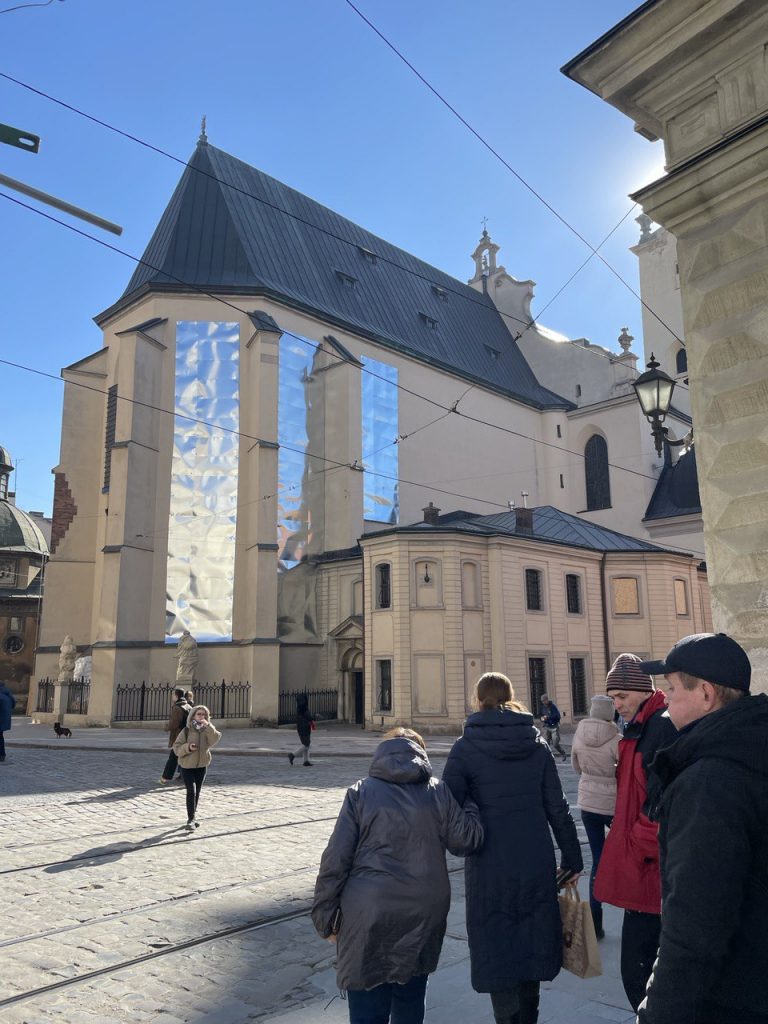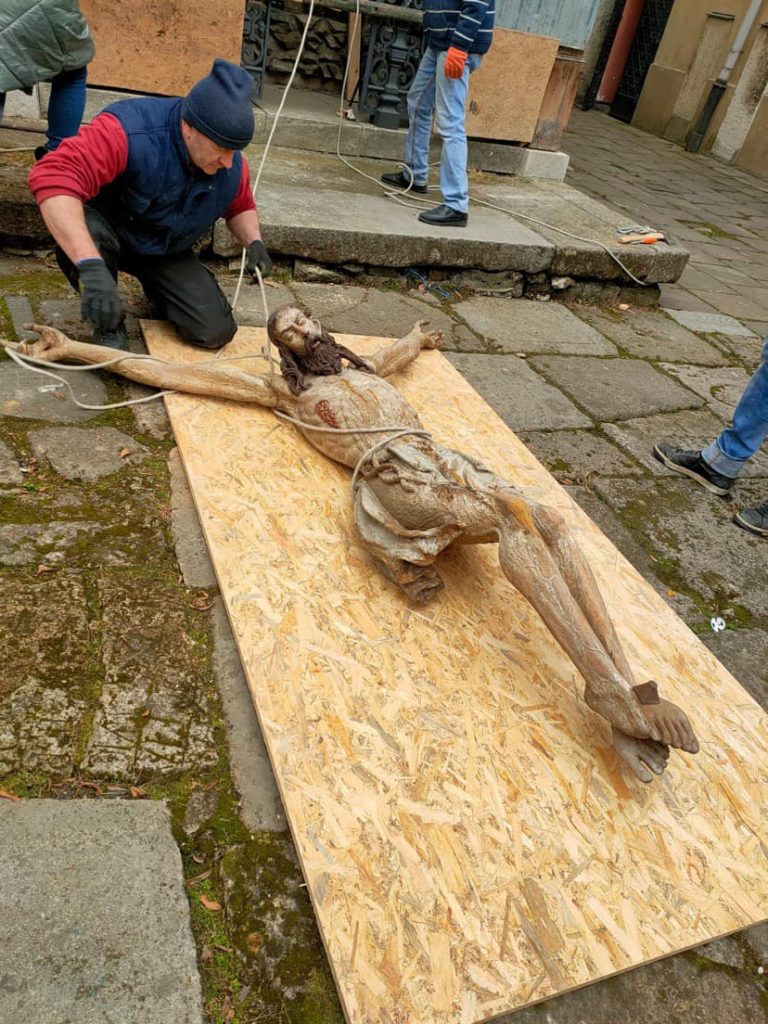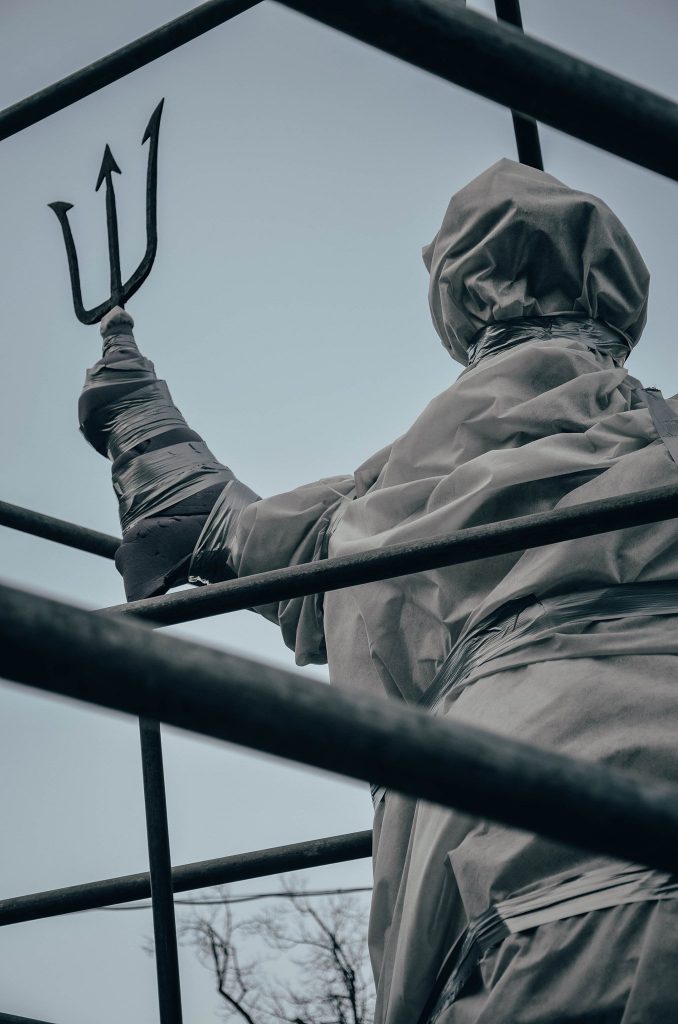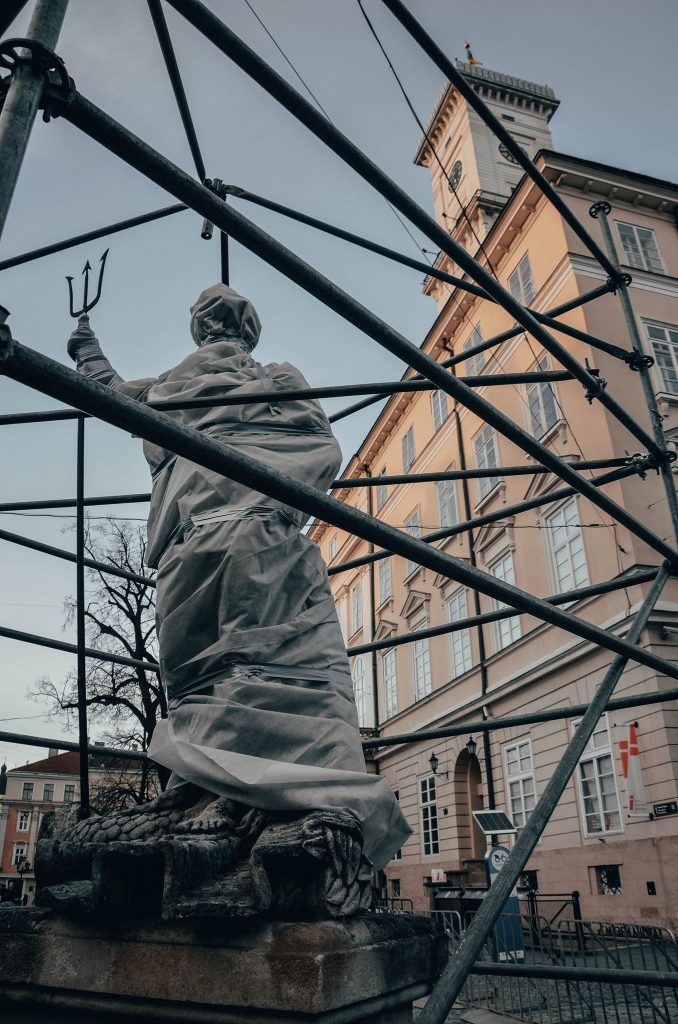Some architectural monuments, sculptures, and art objects in Lviv were temporarily «buried» in protective elements such as films and bags with sands. But nothing lasts forever. When the Ukrainians win, everyone will be able to see our favorite masterpieces again. All of us will look at them more closely, differently after the rise. Today’s CSI text is about how the local community in Lviv works to preserve heritage. We mention only some aspects of this work because it involves many people, and everyone’s contribution is valuable.
Protected from the first days of escalation
Work on protecting monuments in Lviv has begun literally from the first days of the full-scale war. The active position of the community — representatives of the fields of architecture, restoration, protection of monuments, museum work, and art history — became decisive. The experience and support of foreign colleagues and partners are no less crucial.
— Recovering from the shock, the community in Lviv began to think about how to protect cultural monuments. Of course, no one had experience in this area: we first worked blindly, according to the logic of what and where could be most endangered, the least lost during the blast wave, which is the most valuable. We started with objects such as stained glass: we closed or dismantled them and moved them to safe places. Then we took care of wooden works of art that could be easily damaged, — says Lilia Onishchenko-Shvets, director of the Lviv City Council Department of Historical Environment Protection.
One of the first objects to be protected was the Church of the Assumption, located relatively close to the administrative building. The church closed historically valuable Peter’s Kholodny works that survived two world wars, recalled Andriy Salyuk, head of the Lviv regional branch of the Ukrainian Society for the Protection of Historical and Cultural Monuments. After we stained glass windows in city churches, we began to work with street sculptures — secular, like fountains, and sacred sculptures, such as ones near the church of St. Anthony, the Latin Cathedral, etc.
— The sculptures were wrapped in a special waterproofing film, a fiberglass mat, and again in a water barrier film. In case of fragments of explosive shells, these objects will be protected from destruction. On the other hand, even if a piece of sculpture is chipped, everything will stay together, smaller pieces will not be lost, and they can be used during restoration — says Andriy Salyuk. — The issue of protection of cultural monuments, museum collections, and intangible cultural heritage is strategic and the cornerstone of the entire humanitarian policy of a self-respecting state. At the same time, we must remember that our soldiers are currently most concerned about the absolute protection of cultural heritage at the frontline.
More and more volunteers rapidly joined the protection of monuments, cultural, and artistic sites in Lviv. Finally, three mobile groups were formed under the overall coordination of the department: two of them, led by restorers Ruslana Herman and Andriy Pochekva, work almost non-stop, and another, led by Andriy Fedoryshyn, a stone restorer, joins periodically. There are also specific requests from institutions. If you first focused on the high-priority aspects of the monument’s protection and quickly switched to another, now it is possible to return to the objects and finish everything you need. For example, the windows of the Friday Church, where some work has already been done, were recently closed. Here helps LCE “Green Lviv”, which has a special high lift. The city plans to protect monuments, a fountain with the figure of the Mother of God, scanning the interiors and exteriors of objects, cooperate with international foundations such as the Blue Shield and Alif, which are ready to support Lviv in preserving heritage.
Support between each other and from outside
The recommendations and assistance of conservationists from other countries have become essential, especially at the initial stage. For example, Polish experts shared the experience of saving monuments. For example, some of them worked with stone sculptures after the bombing of Aleppo in Syria (during the hostilities of 2012-2016, the historic center of this city suffered significant damage). Experts from Croatia, where the memory of the war (events of 1991-95) is still fresh, shared their advice with Ukrainians.
Poland and Germany extended a helping hand when local shops lacked relevant materials in the first weeks of the full-scale Russian-Ukrainian war. The Polish Polonika Institute, which is actively involved in the preservation of sacred monuments in Lviv and the Lviv region, and the Cultural Heritage Foundation gathered in Polish cities and sent two wagons of necessary things to Lviv, and one wagon was also given to Kyiv. According to Lilia Onyschenko-Shvets, these are fire extinguishers, fire-resistant fabrics, films, bedspreads, and others. Fire extinguishers (over a thousand) were distributed in museums and temples, including wooden altars and iconostasis, and transferred to wooden churches in the region. Lviv residents also shared their materials with other cities, such as Chernivtsi, Ivano-Frankivsk, Zhovkva, and Drohobych. Lviv specialists developed instructions on protecting various types of monuments and sent them to colleagues in Dnipro, Odesa, Kyiv.
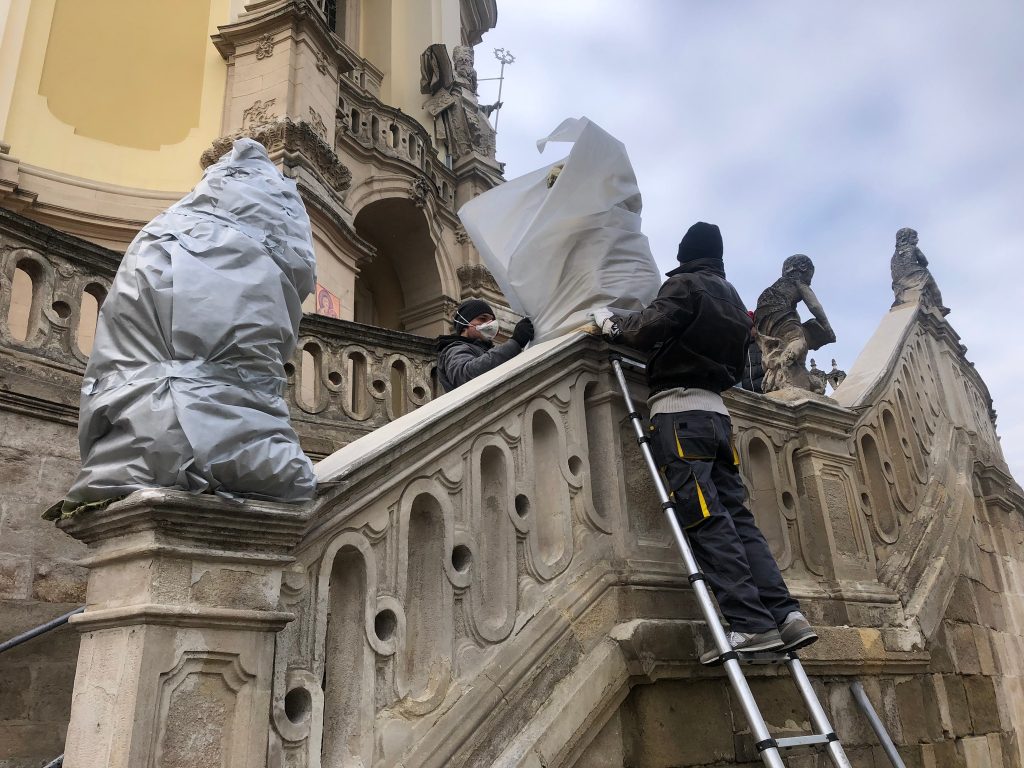
#SaveUkrainianHeritage: the power of the data
With the beginning of the war and the threat of significant material destruction, the need to digitize historical architecture became relevant. There are several years in the row when Skeiron has been working in this direction in Lviv, and today more than one and a half hundred such objects are in its archives in the Lviv region alone. There are also scanned buildings in other locations, such as the State Industrial Complex in Kharkiv or the Kachaniv Palace in the Chernihiv region.
Together with like-minded people, with the assistance of the city and the region, the company launched the #SaveUkrainianHeritage initiative. The goal is 3D-scanning of cultural monuments all over Ukraine, creating appropriate 3D copies, which, if necessary, can be the basis for project budget documentation and the actual restoration of the object.
— During scanning, we create detailed 3D copies that can be used to restore and reconstruct objects or their elements. We record information about each component, its exact dimensions, and color in digital format. This data can then be used to alternate the reconstruction of the building, which could be destroyed or damaged. Scanning involves most of the geodetic work: for measurements, we use primarily devices such as total stations, laser scanners, which allow you to create a detailed 3D model, and to transfer textures, colors of paintings or mosaics — good cameras and in some places drones, which significantly speeds up, — says Yuri Reverend, co-founder of Skeiron.
At the initiative of the Polonika Institute, several sacral buildings in Lviv related to the Polish cultural heritage have already been scanned: the Church of St. Andrew, the Dominican Cathedral, the Church of the Intercession of the Blessed Virgin (formerly the Church of St. Nicholas). Among the priorities for scanning — are the Armenian Church, the ensemble of the Assumption Church, and the Cathedral of St. Yura. In cooperation with the relevant structural units of LRMA (now the Lviv Regional Military Administration) and the LMR, the Heritage Bureau is developing a list of sites in the city and region that have historical and cultural value and should be digitized first. There is a willingness to work in other cities or regions of the country where it is possible and safe, says the coordinator of the initiative #SaveUkrainianHeritage Maria Kravchenko.
here are also plans to involve scanning specialists and volunteers from all over the country who are not indifferent to the fate of monuments and thematic training, creating an open database of digital models of monuments. There is also an option to fund the scanning of a specific monument. You can learn more here.
«Lviv Welcomes»: popularization of the city’s culture
The Heritage Bureau in Lviv is a focal point for the promotion, preservation, and restoration of heritage was forced to adjust its activities with the onset of the war, as did many cultural institutions. Among the areas of activity — and this is economic activity, development of project budget documentation, technical supervision of construction and restoration; program coordination of programs for co-financing the restoration of windows and gates; popularization of cultural heritage, holding educational events and training seminars — educational work has become a priority in recent weeks.
— We saw that many people from other cities go to Lviv, some have been to our city before, others — never. Together with gallery owners and museum workers, on the initiative of Pavlo Gudimov, we launched the program “Lviv Welcomes”. Within its framework, we hold walks, meetings, and discussions with people who moved to Lviv during the war — thus acquainting those who are interested in local culture and history, helping to get to know Lviv — conducted tours, presentations, and lectures on the restoration of heritage after the war and the role of digital technologies in preserving cultural heritage. Also, in addition to sightseeing, there were special events restored in Lviv on the topics of funding sources, actors, and initiatives in cultural heritage protection, — says Pavlo Bogaichyk, head of the Heritage Bureau.
People of different professions, experiences, and ages come to these events. After each event, the organizers receive a lot of positive feedback: such meetings and communication distract people from the negative experience and horrific news.
And recently, the Bureau initiated the development of communication, not limited to Lviv – it is about establishing horizontal links with those who deal with cultural heritage in different regions of Ukraine. Experts have already agreed, ready to participate in discussions on the preservation of cultural heritage and its restoration after the war. New walks through Lviv from the Bureau and partners for citizens and those for whom Lviv has become a refuge you can find here.
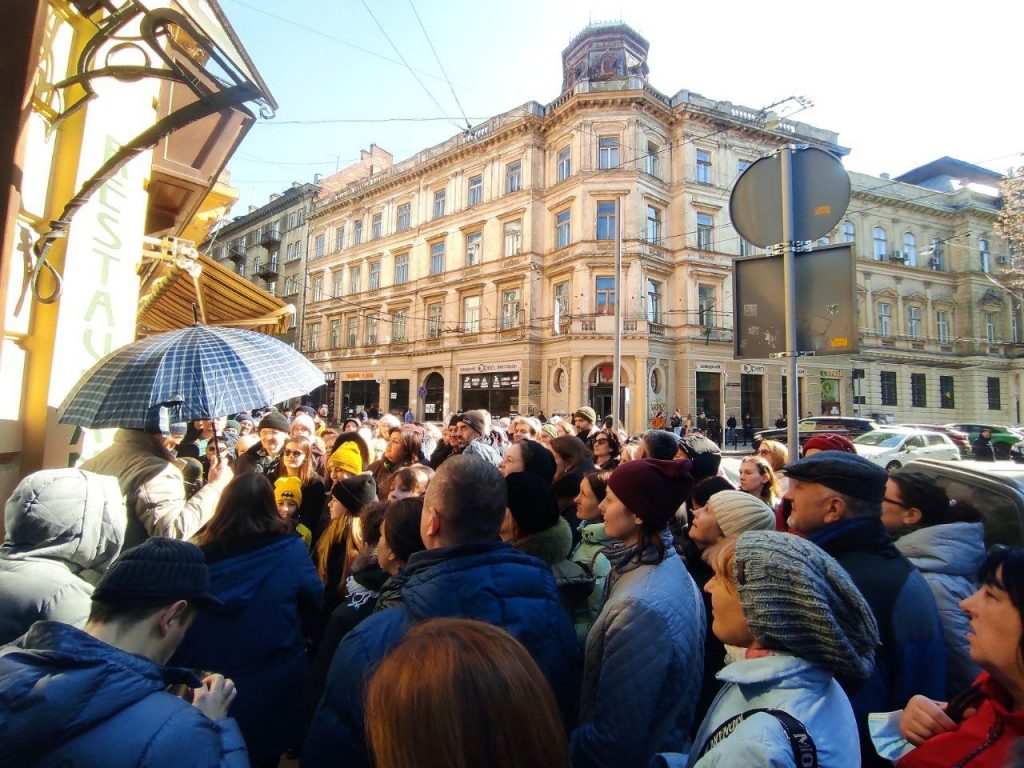
In Ukraine as a whole, according to the information of the Ministry of Culture and Infopolitics, up to date on April 15, 166 cultural heritage objects were damaged or destroyed due to military actions by the Russian side. The Ministry of Culture and Information Policy has created a special resource to record war crimes in the field of culture: damage to ancient buildings, monuments, religious buildings, works of art, natural monuments, etc. These materials are intended to be used as evidence for the criminal prosecution of those involved in crimes under Ukrainian law at the International Criminal Court in The Hague and a special tribunal. The sphere of culture in Ukraine has suffered large-scale losses, which are currently impossible to estimate due to active hostilities and the temporary occupation of certain territories of the country.



